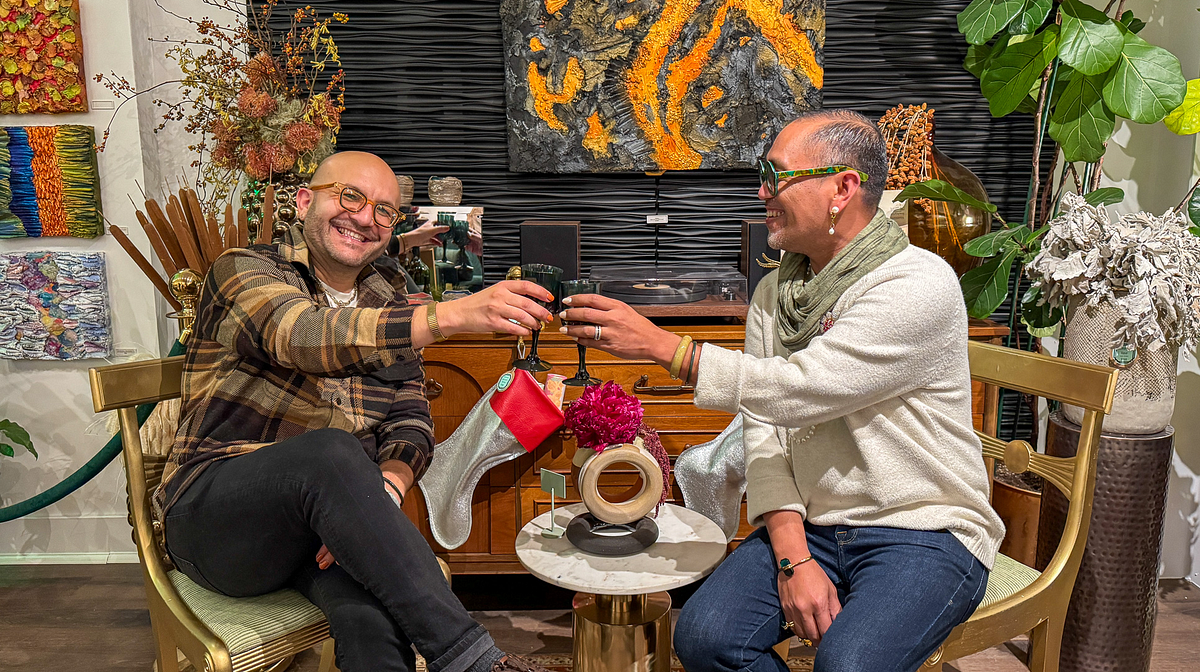If “art walk” drums up imagery of middle-aged white women drinking wine and making up genres of art, you’ve come to the right place. Except replace women with men and make it more of a party vibe — then you’ve got Castro Art Walk.
This is a monthly mashup of galleries, local businesses, and artists trying to out-quirk each other. But let’s be real — it’s less about the art and more about socializing, getting your steps in, and looking at colorful things under flattering lighting. And there’s free wine at many of the stops.
I don’t have some major incident to report about this experience — no one barfed or got into a fistfight over a sculpture made of recycled kombucha bottles. It was mostly me sipping a sav blanc while trying to guess if the guy in the leather jacket is an artist or just there for the free booze. So the following is just a recap of what I saw last week.

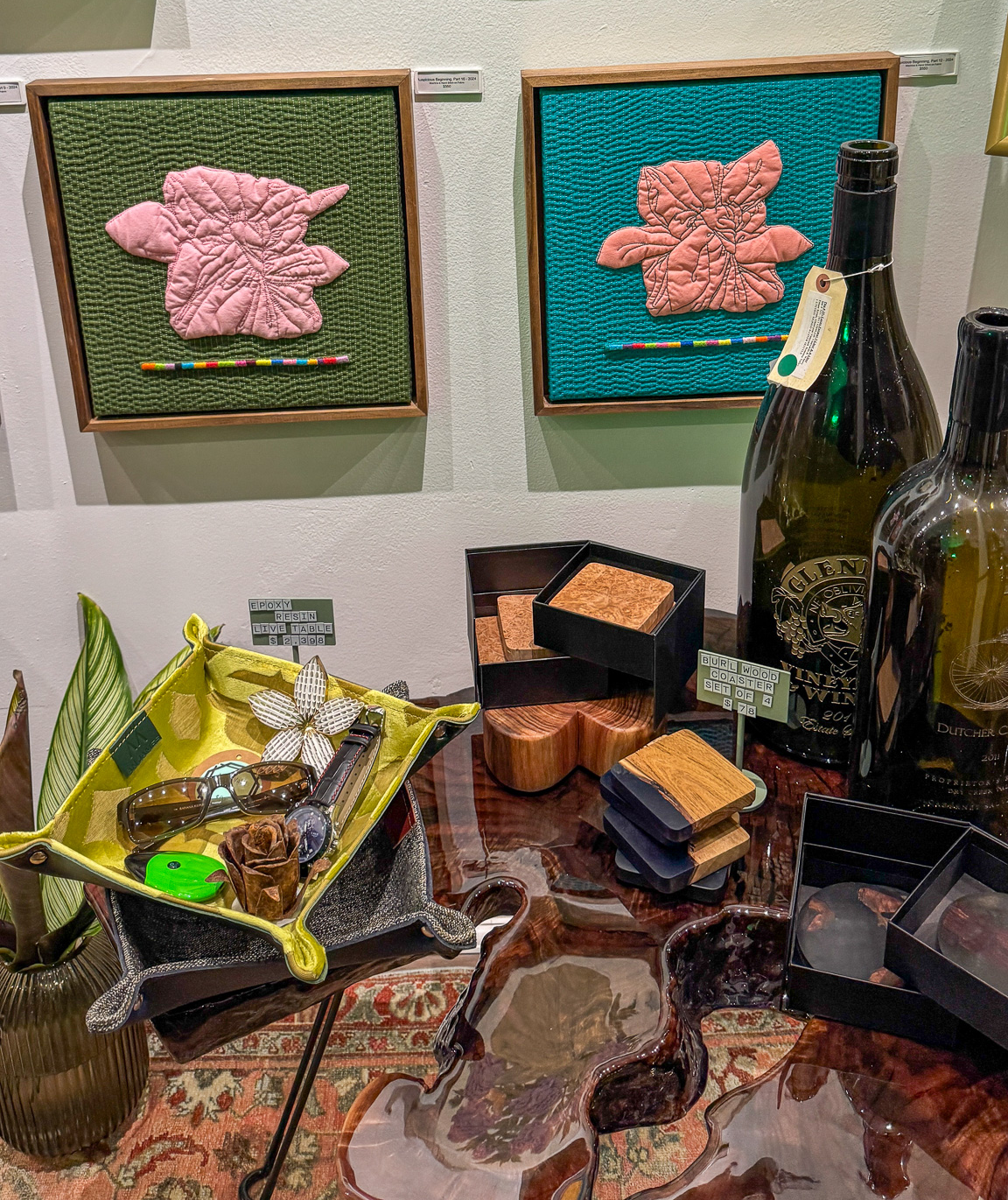
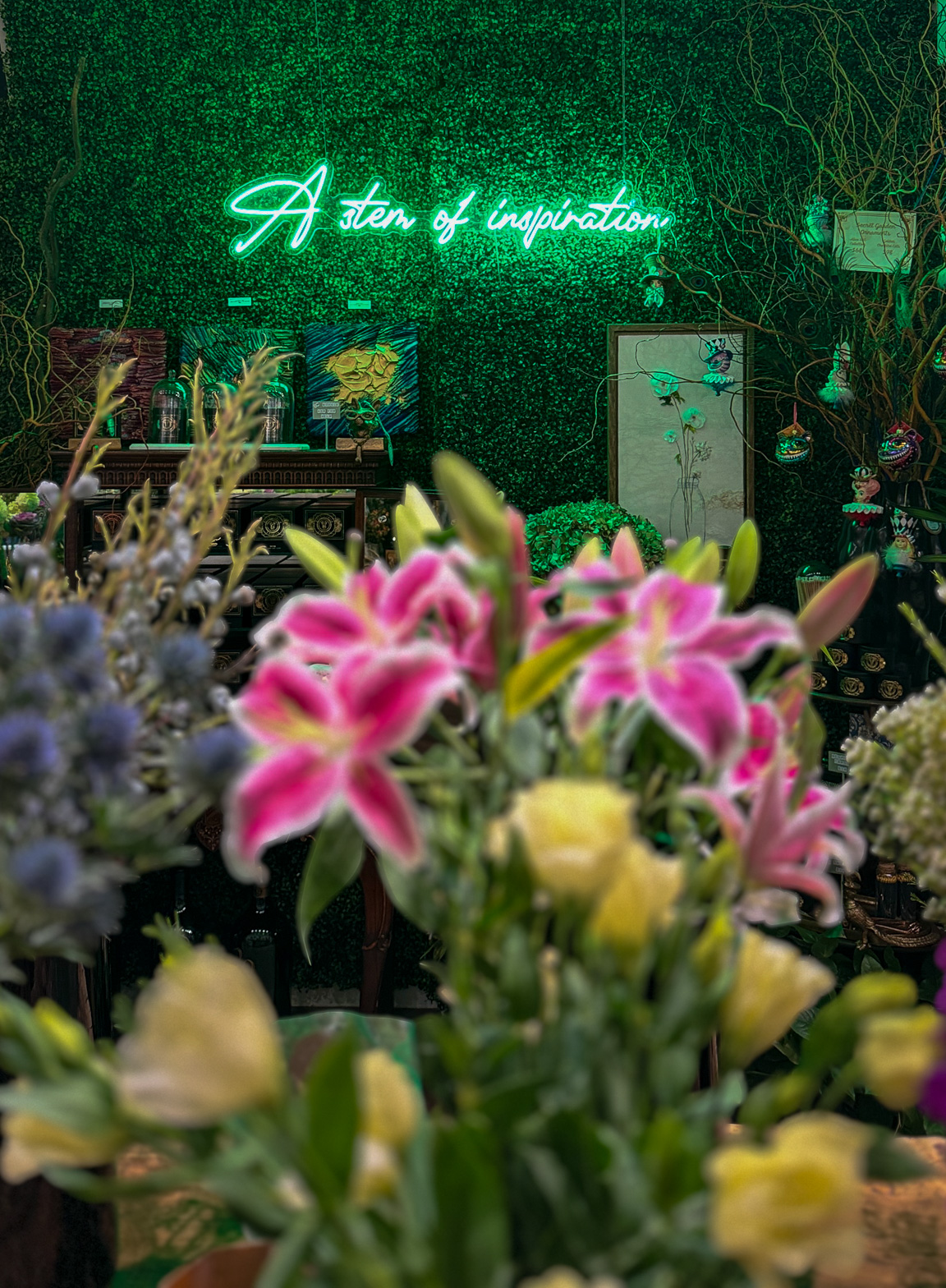
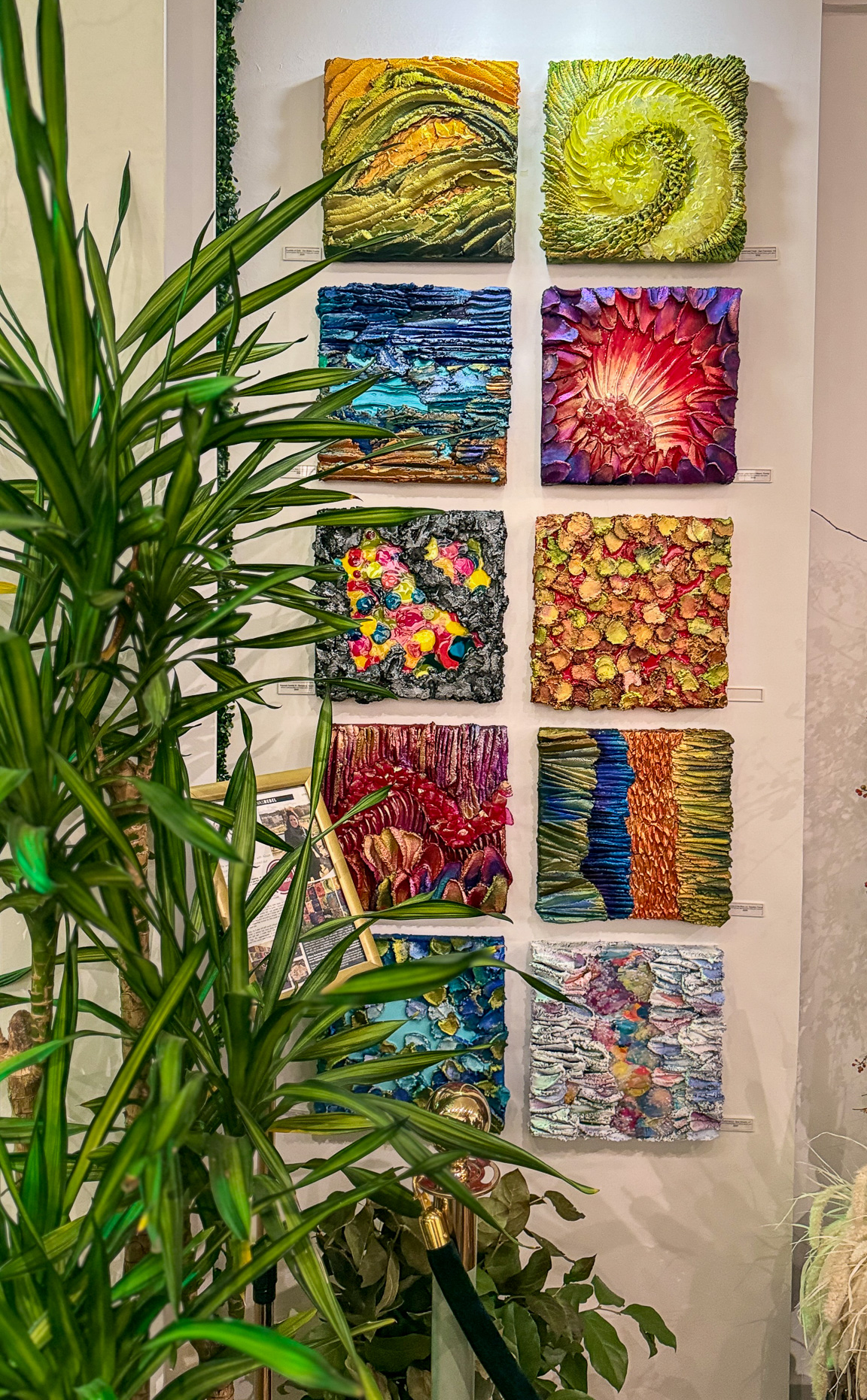
The first thing to know is Art Walk has printed programs with stops you’re supposed to make. The first is Chartreuse by Roje — owned and run by married couple, Roberto and Jeff Dumlao. It’s billed as a flower delivery shop, but feels more like an upscale modern apothecary turned gathering place.
Jeff greeted us with wine, dressed in an ultra-fashionable sweater, scarf, pearl necklace, and Elton John-esque round-frame glasses. I’m not artsy, and too much talk about what type of emotion a piece evokes makes me yawn — but the boys over at Chartreuse by Roje aren’t pretentious. They’re fun. “We actually have no background in art but we just love pretty things,” Roberto told me.
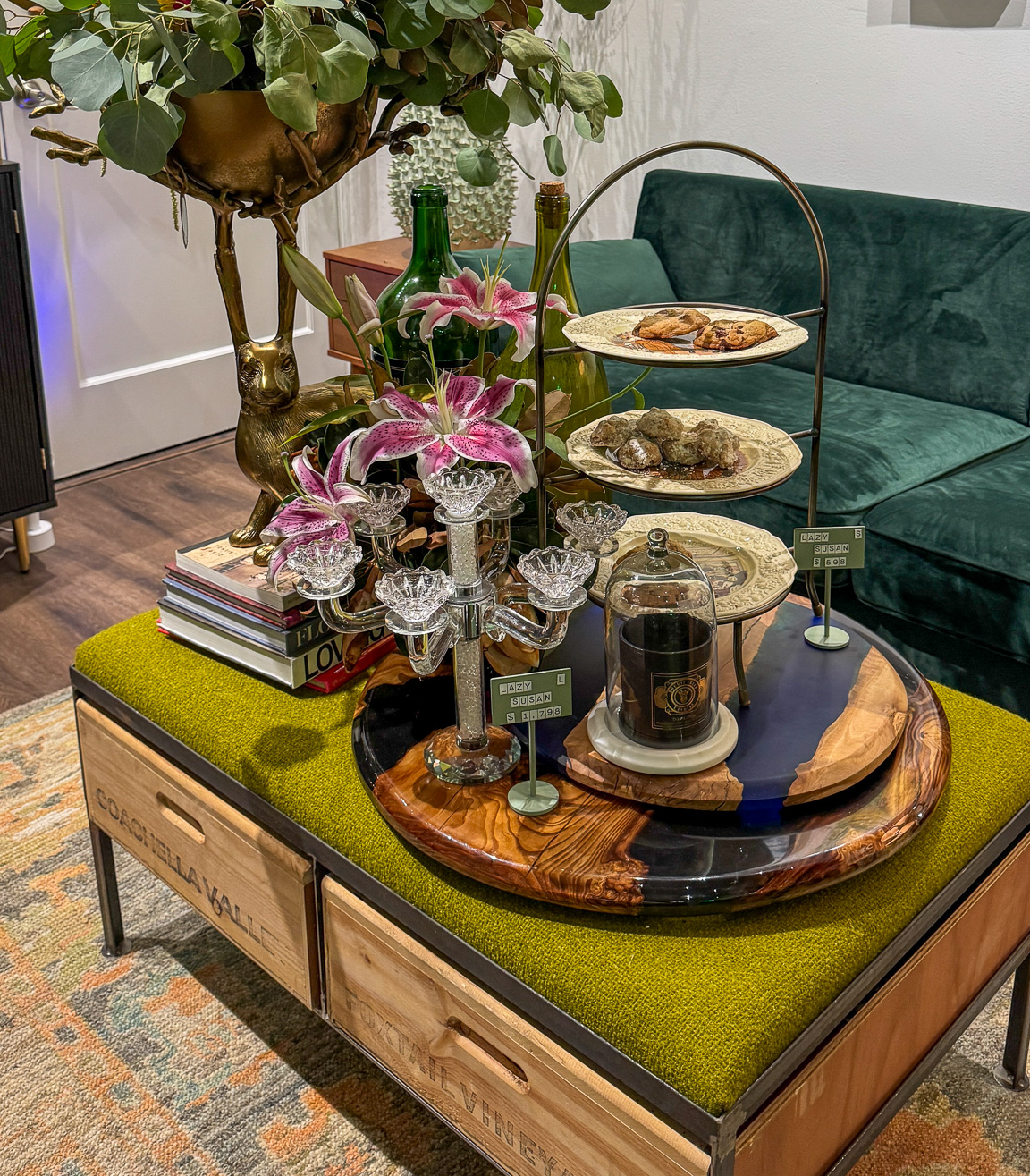
The store’s different spaces are defined by tastefully-themed pockets. The midcentury-modern sitting area with the record player and José Feliciano alum spoke to me; quite possibly because it’s near the triple-tier sweets tray, which I wanted to eat from but didn’t know the etiquette. Is it rude to eat something this beautiful?
Roberto explained to me that in order to create a risk-free endeavor for the artists they want to support, they charge a very small commission, and only if the art sells. But for them the night’s more about kicking back and socializing.
“We don’t have to try to sell anything tonight, we’re just drinking wine and talking about art, and it’s great opportunity to expose emerging artists because we’re not charging a gallery fee,” Roberto said.

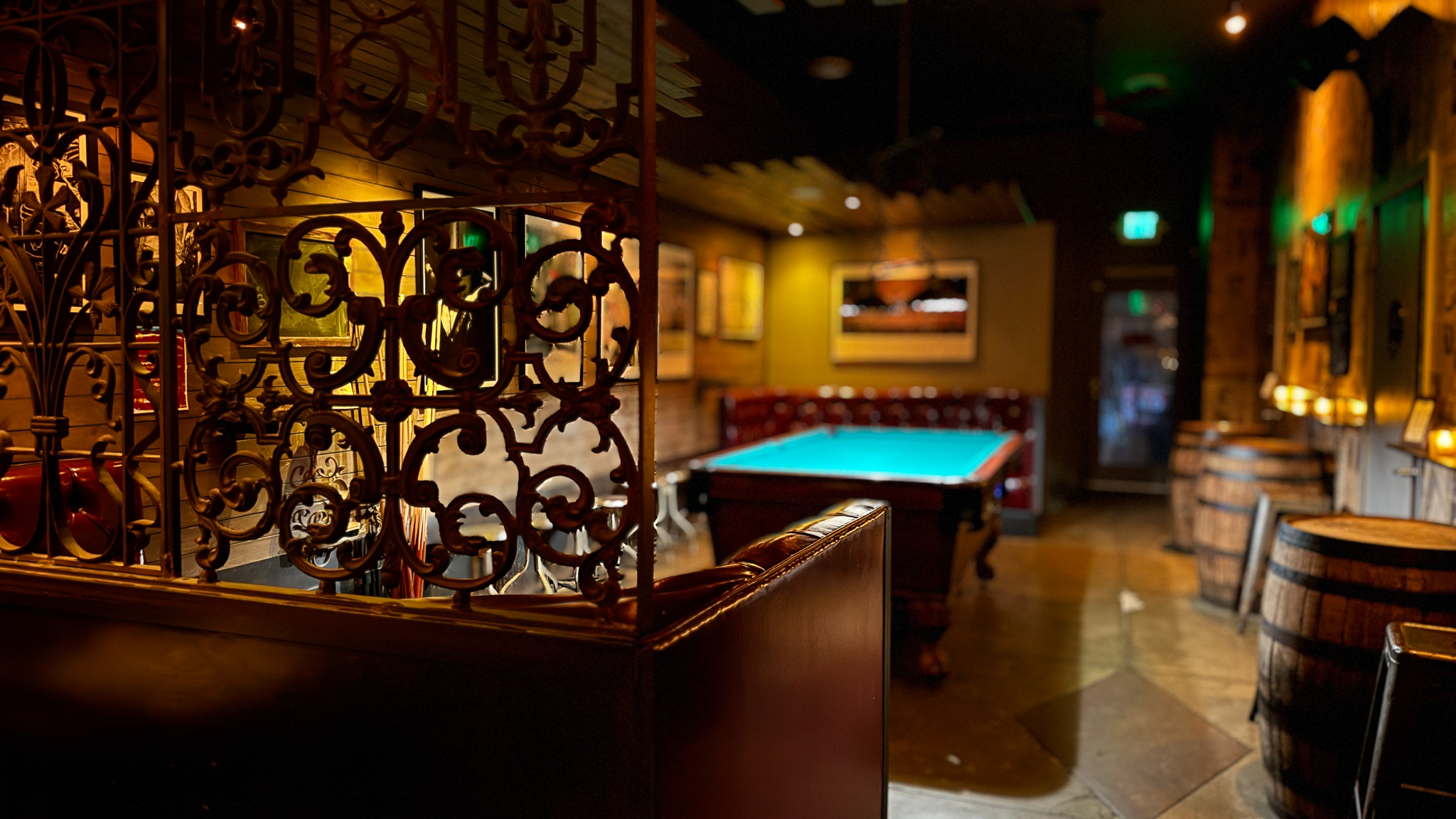
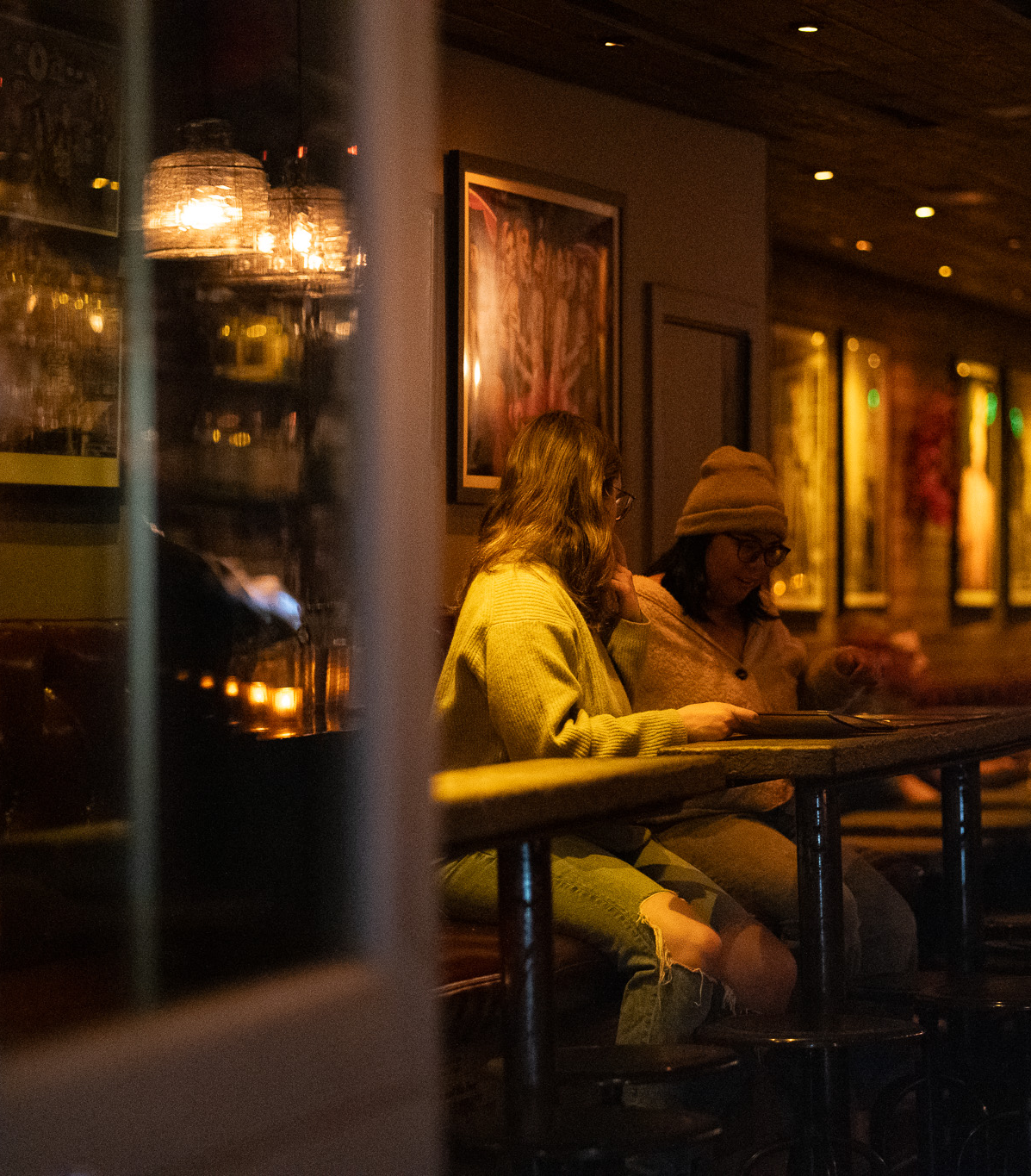
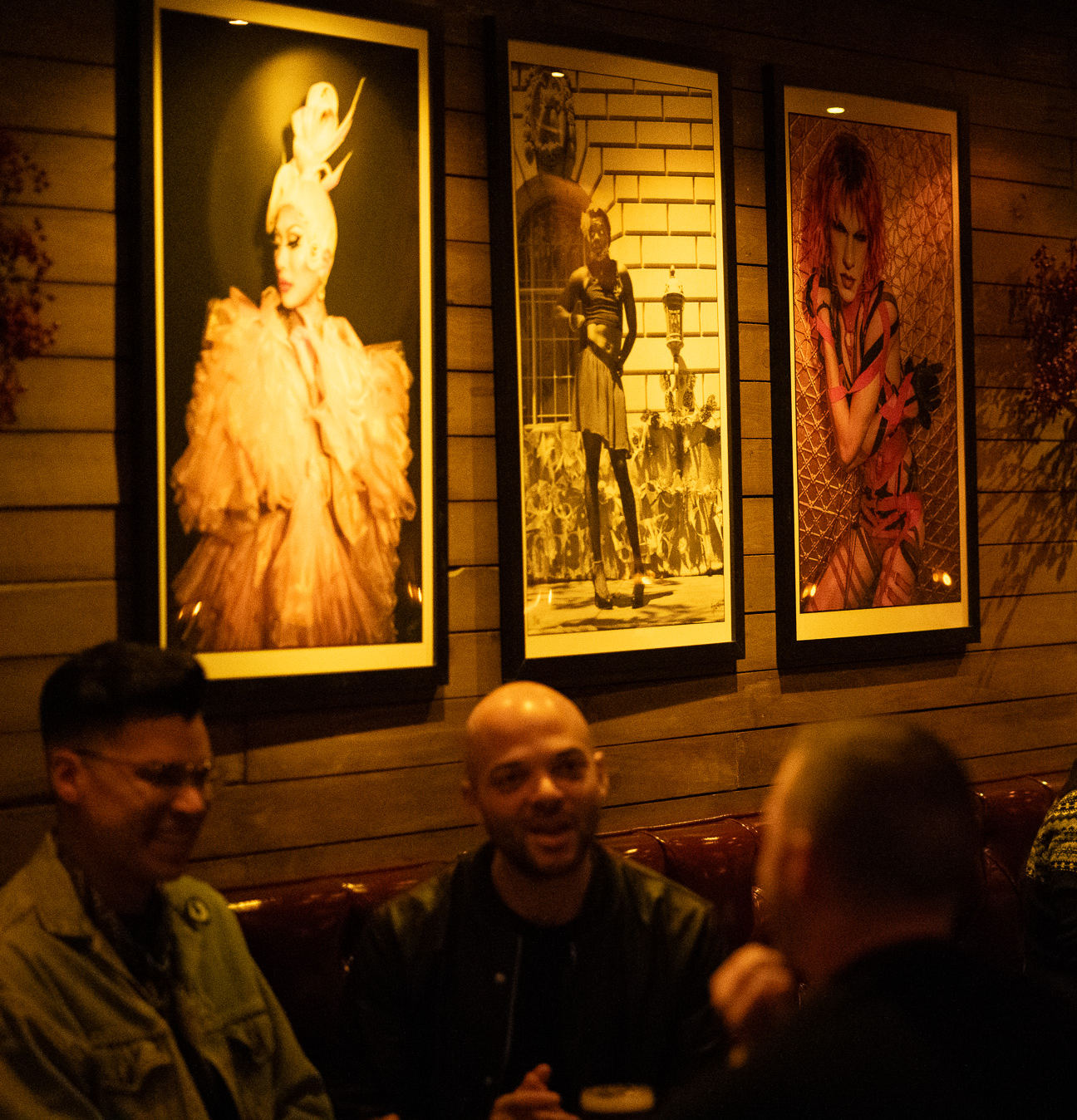
At this point I was still expecting all the Art Walk stops to be gallery-heavy so I was surprised to find number 2 to be a bar. Dimly lit, leathery, and sexy, Blackbird was made more provocative by the display of risque photography covering the left wall for the entire length of the venue — apparently mostly or all photos by SF-based photographer, Gooch, who recently won a journalism award for his Hunky Jesus photoset in The Bold Italic.
Pictured above, Blackbird was sleek and beautiful but it wasn’t super lively and the bartender told me that he’s unsure whether there’s been any kind of uptick in sales due to Art Walk. Blackbird is a staple of Castro for its craft cocktails — owned by the same people who provide a primo pooping spot at their arcade bar, The Detour.


Next up was The Academy, sort of an Ivy League-looking Skull and Bones society for gay daddies and their friends. A barber shop on the storefront with a swanky speakeasy below, this social club has an application process and membership fees ranging from the $20 per month Liquor Locker to the $450 per month Premier Membership. And wow have prices gone up!
Buzzed enough to forget that private social clubs are out of my tax bracket and taken by the idea of my husband having his hair styled by a gay on the regular, I asked to speak to the manager about becoming a member, but the silver fox in charge brushed me off and referred me to their website.
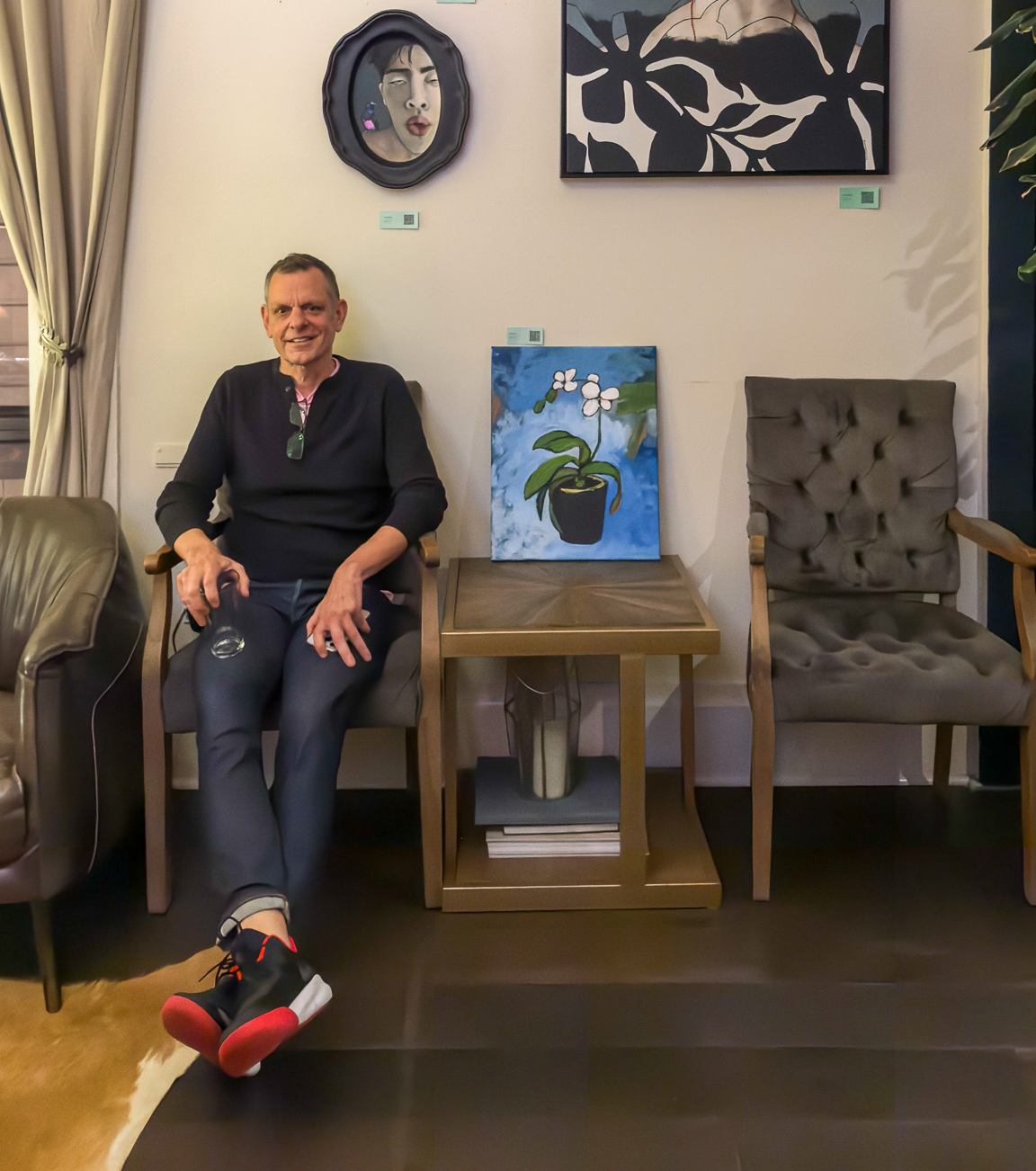
We moved on to the upper level of the club where artist Bill Samios was sitting with three friends, in a room covered wall-to-wall with his artwork. Beautiful men and a woman popped out of the clean, minimalist paintings, all without background texture to distract from the subject.
Samios knows everyone that he paints. “Some of them I’ve been in love with, some are good friends. That was my boyfriend,” he said of an attractive muscular black man posed in a vulnerable position. “Everyone has inspired me in one way or another.”
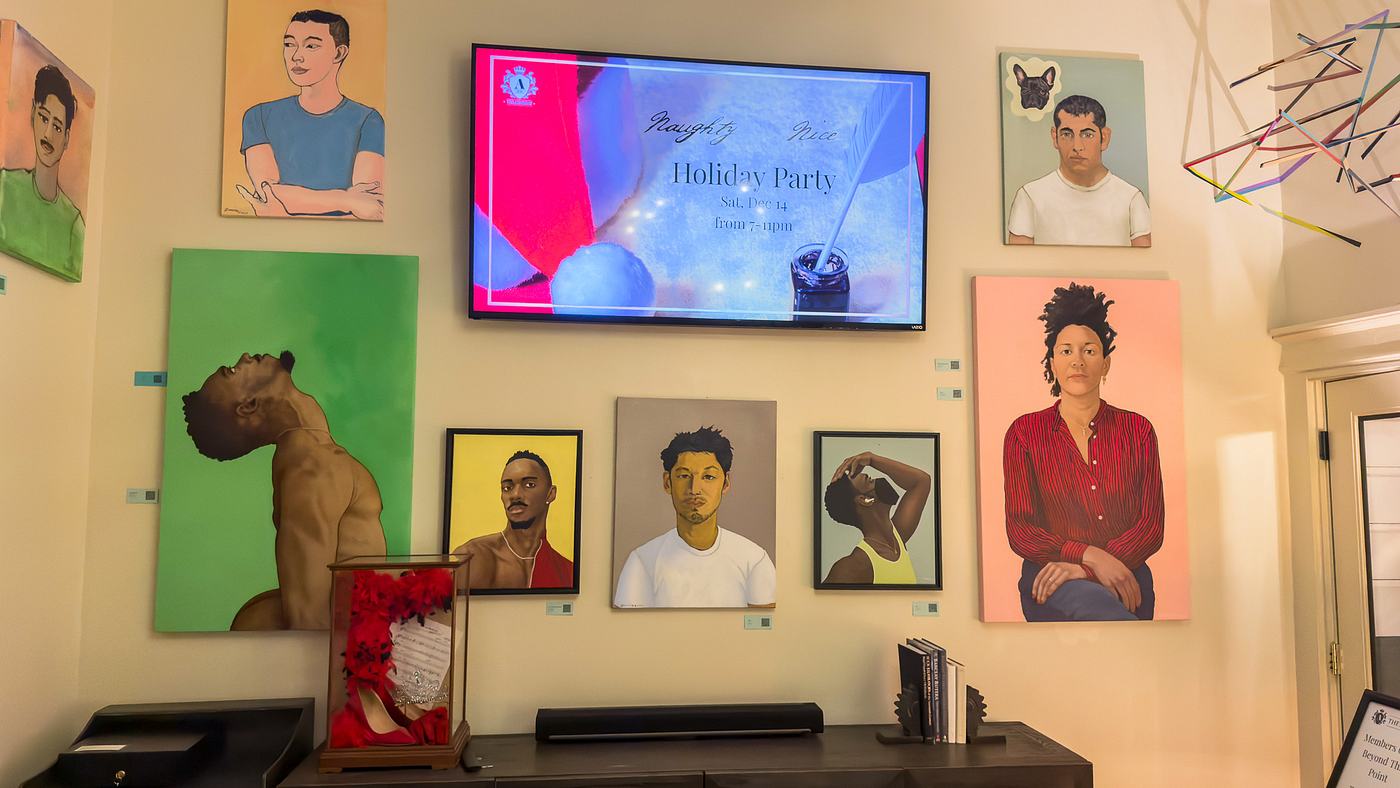
Samios’ art has been on display at The Academy for two months now, where they typically change it out quarterly. He told me he’s excited that he’ll have an extension into 2025, and that he’s noticed increased eyes on his work, and a few sales. “It’s good exposure,” he said.
We got shooed out of the Academy after about 15 minutes, so we took refuge at Art House SF — a miniature, West Coast version of a high-end NYC art gallery. I considered trying to pull it together and act like I belonged here, but I was too excited about the complimentary wine after purchasing alcohol at the last two spots.
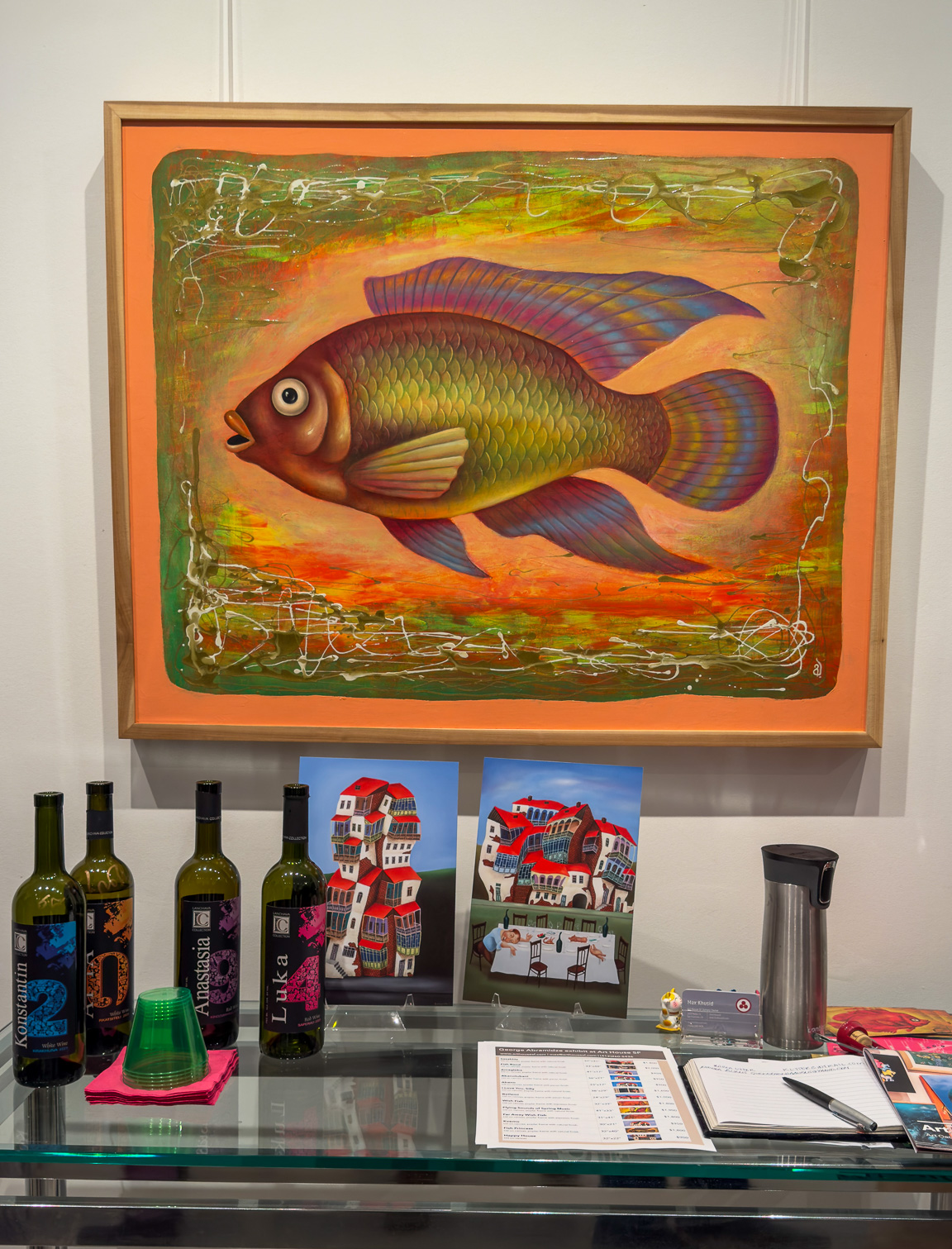
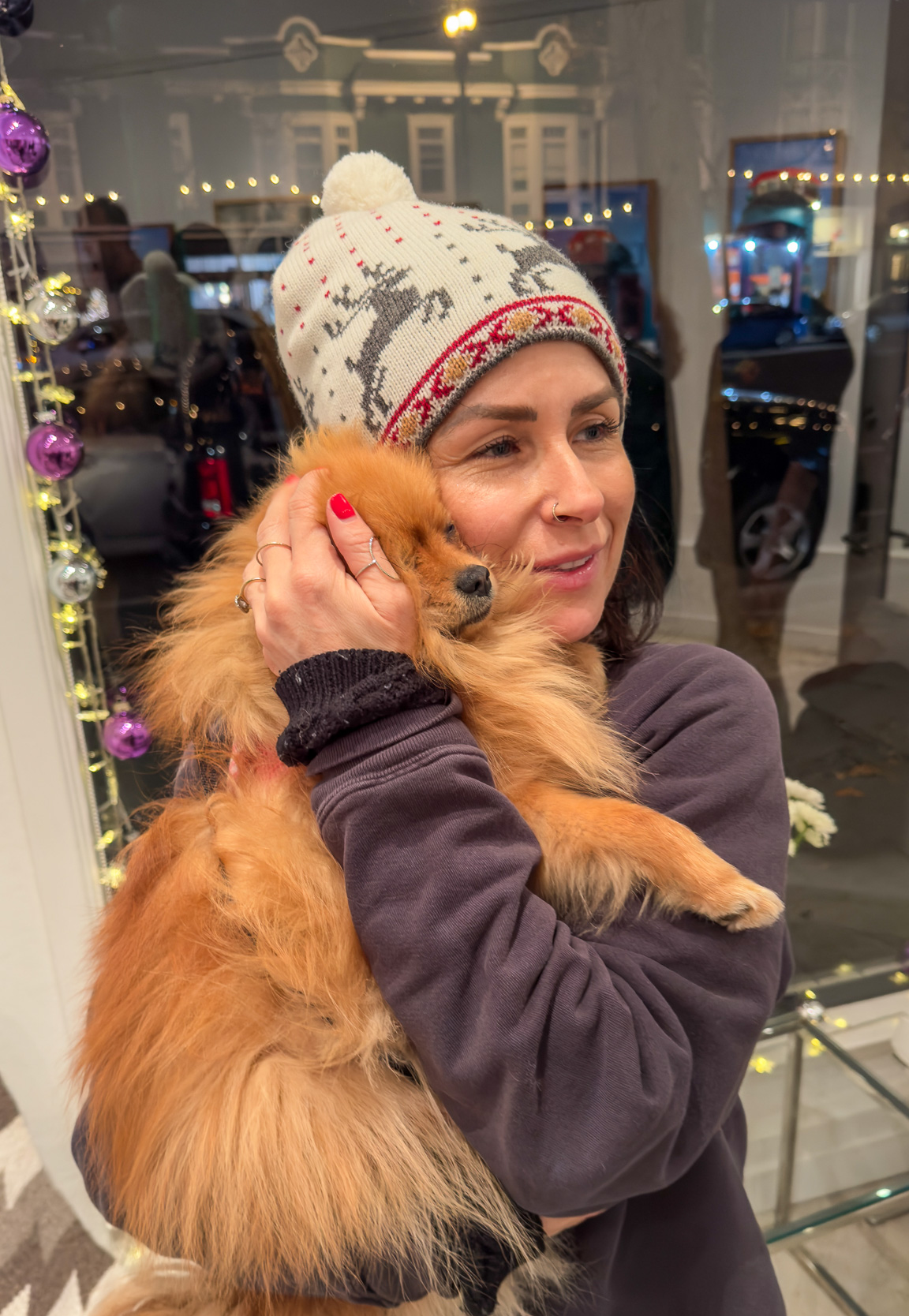
This brightly-lit venue currently features Georgian artist George Abramidze’s surrealist paintings of dancing houses, and owner Max Khusid and his pomeranian were the warm welcome we needed after The Academy.
Khusid holds a computer engineering degree from Carnegie Mellon. He was chatty, knowledgeable, and pleasant to be around. He watches artists for a long time — sometimes years — before he reaches out, and once he decides he wants their art he flies to them. It’s an old-school business model of art curation; more common in the 20s and 30s, he suggested.
He purchases and holds inventory rather than consigning it — “like a hardware store would.” I didn’t have to tell him to explain it to me like I’m 5, he could see that I don’t know shit about art. Khusid is very careful in choosing his artists because it’s a years-long commitment.

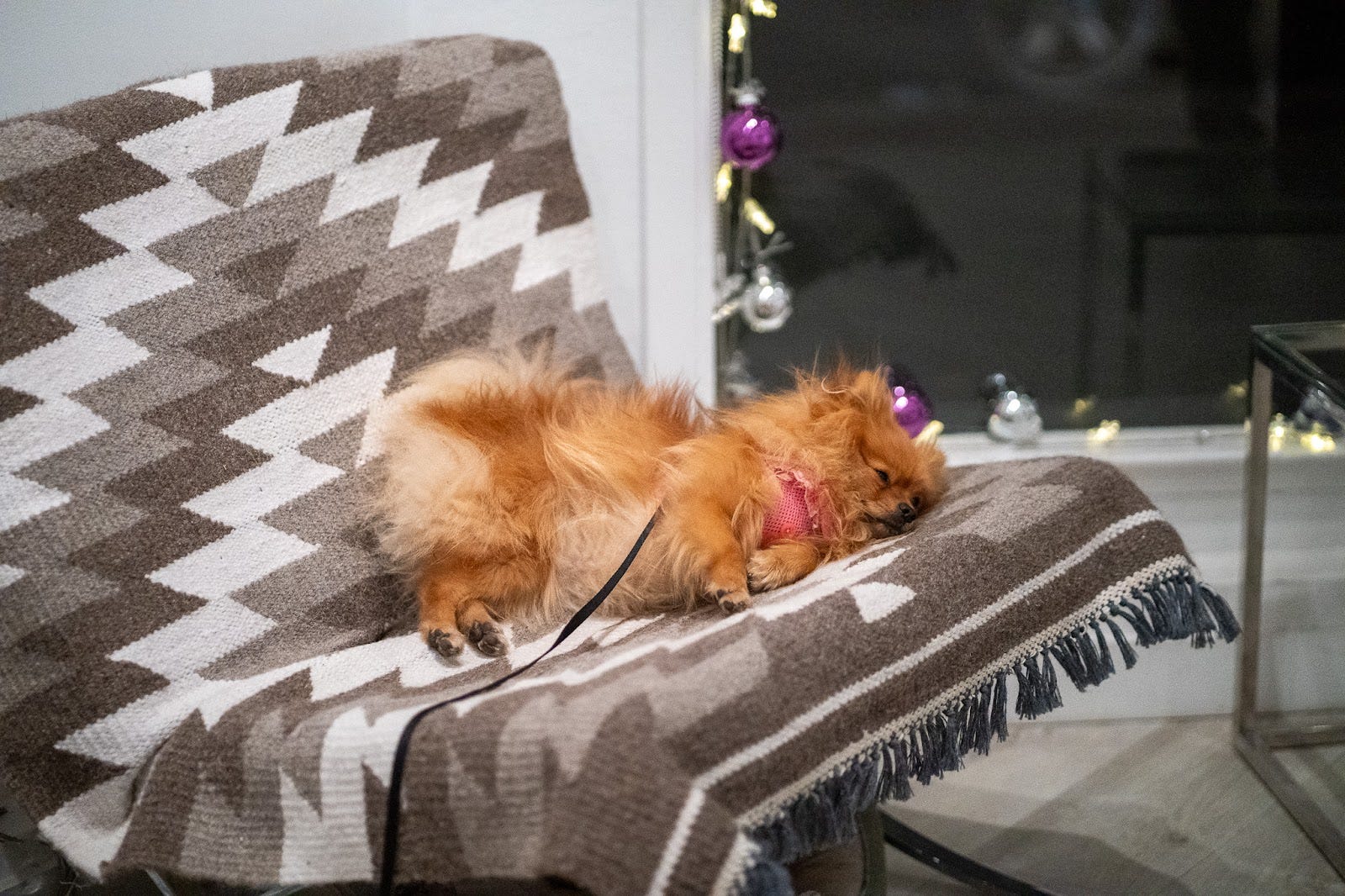
The Pomeranian passed out face down like a frat boy. We left Art House feeling tipsy, which I’m learning is on brand for Art Walk.
A few doors down, we wandered into an empty screen-printing shop called Fave. The walls were covered with slogan tees, and a neon sign boldly announced, “We Make Your Art Come to Life.”
We followed the “queer mall” rainbow footstep patterns down a long hall. The techno music grew louder as we entered a more conventional store where people were trying on furry rave coats and inspecting voluptuous candles.
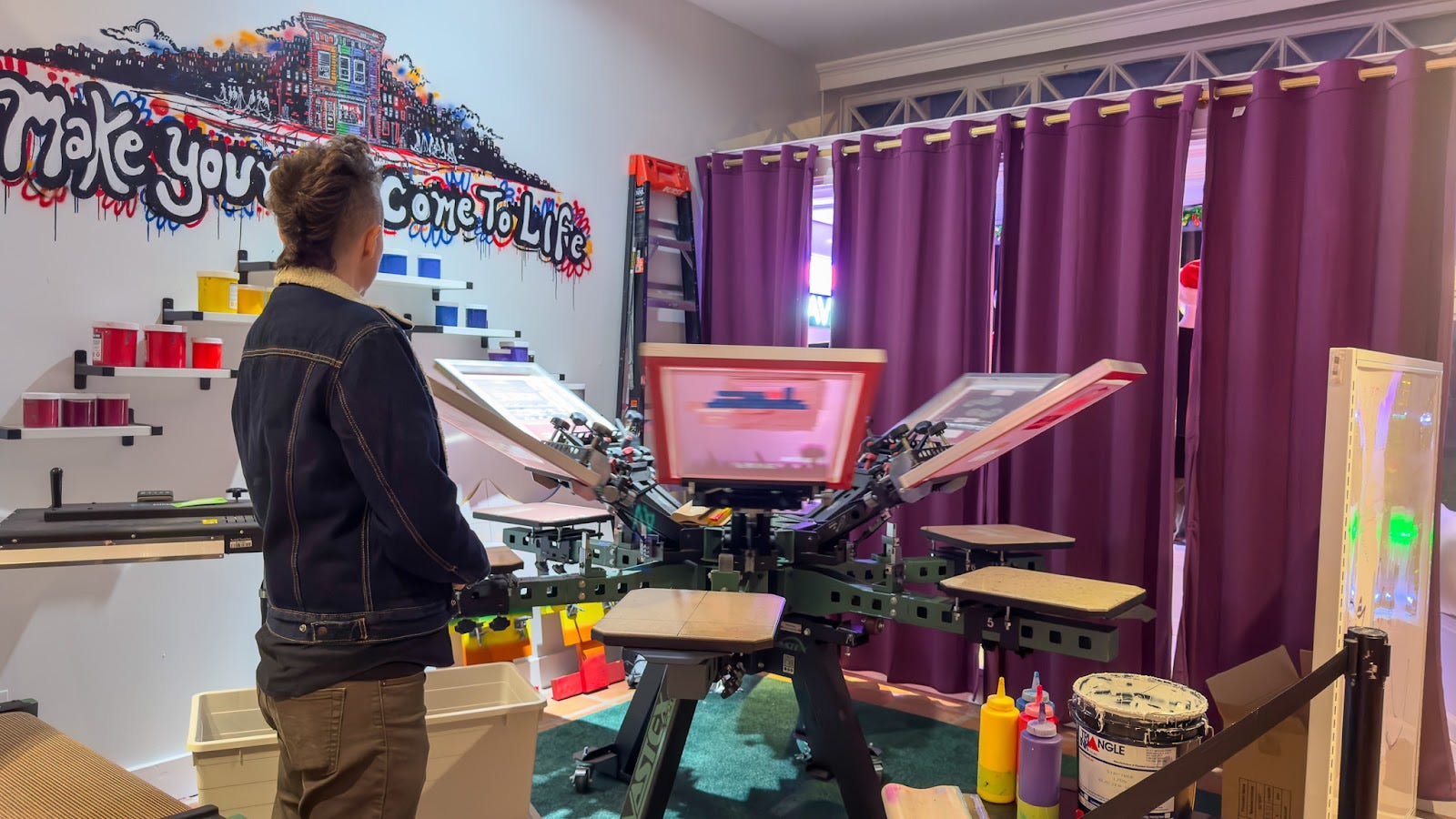
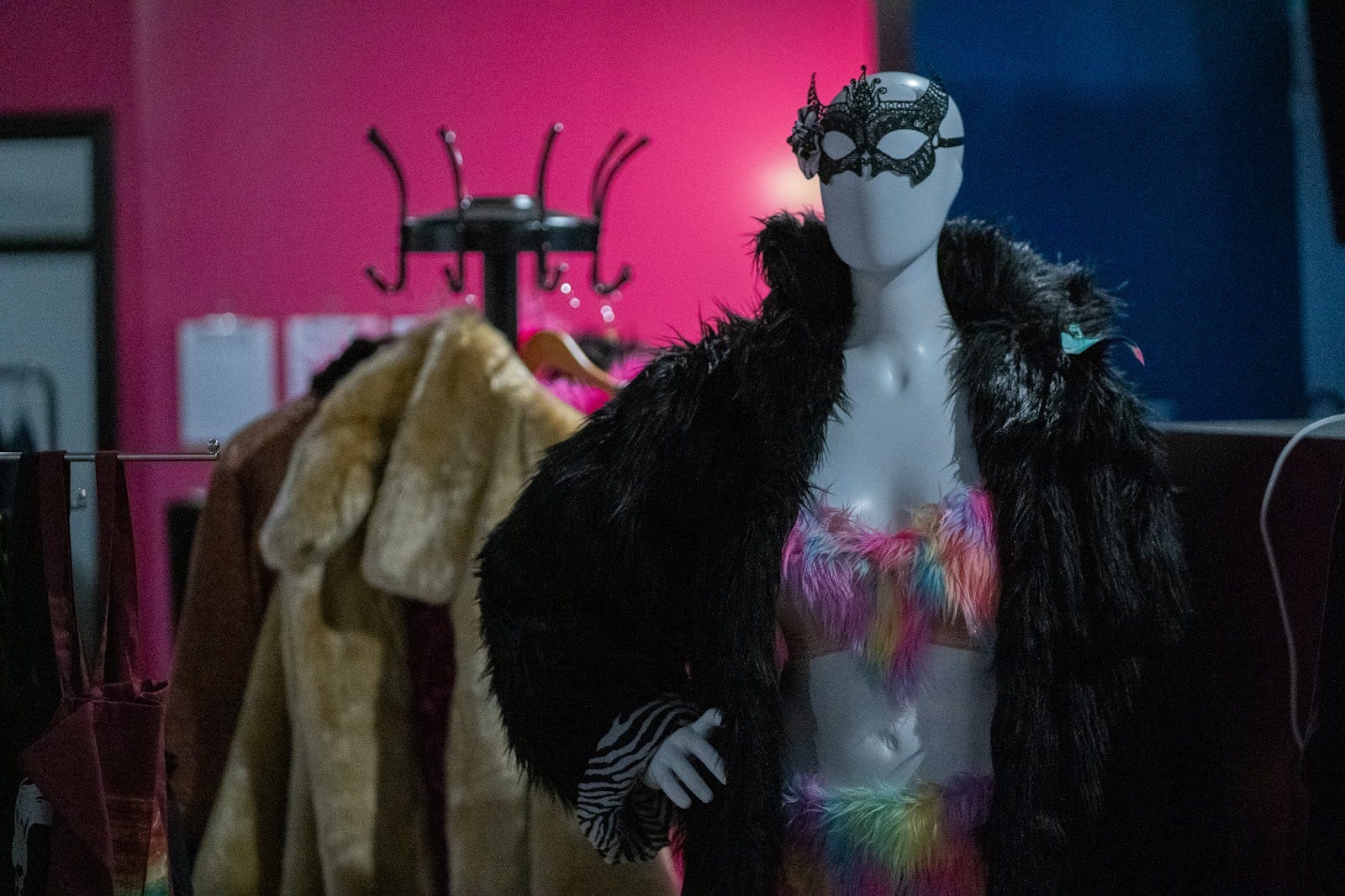
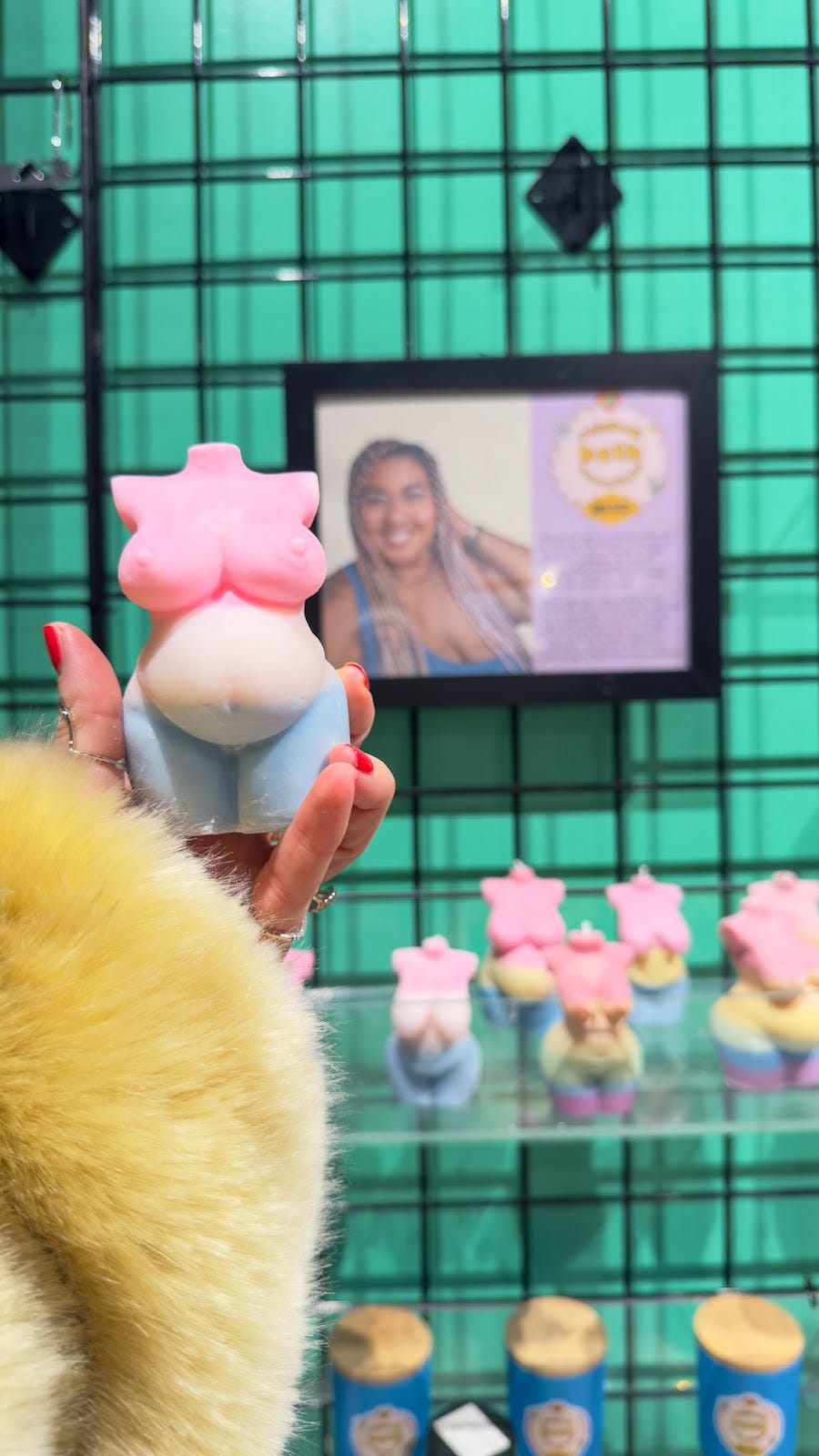

Danae Lintz, the owner, greeted us and gave us a tour of the space, which showcased products from community artists. Danae was effortlessly cool — dressed in a denim jacket with faux fur lining and rocking a salt-and-pepper mohawk. She radiated that androgynous energy that somehow captures the best of both genders.
She walked us through her screen printer and darkroom as we chatted about business. Danae explained that she’s received grants to keep the shop running — something she’s incredibly grateful for — but business can still be tough. Every time I talk to brick-and-mortar shop owners, the numbers never add up in my head. How do they even survive?
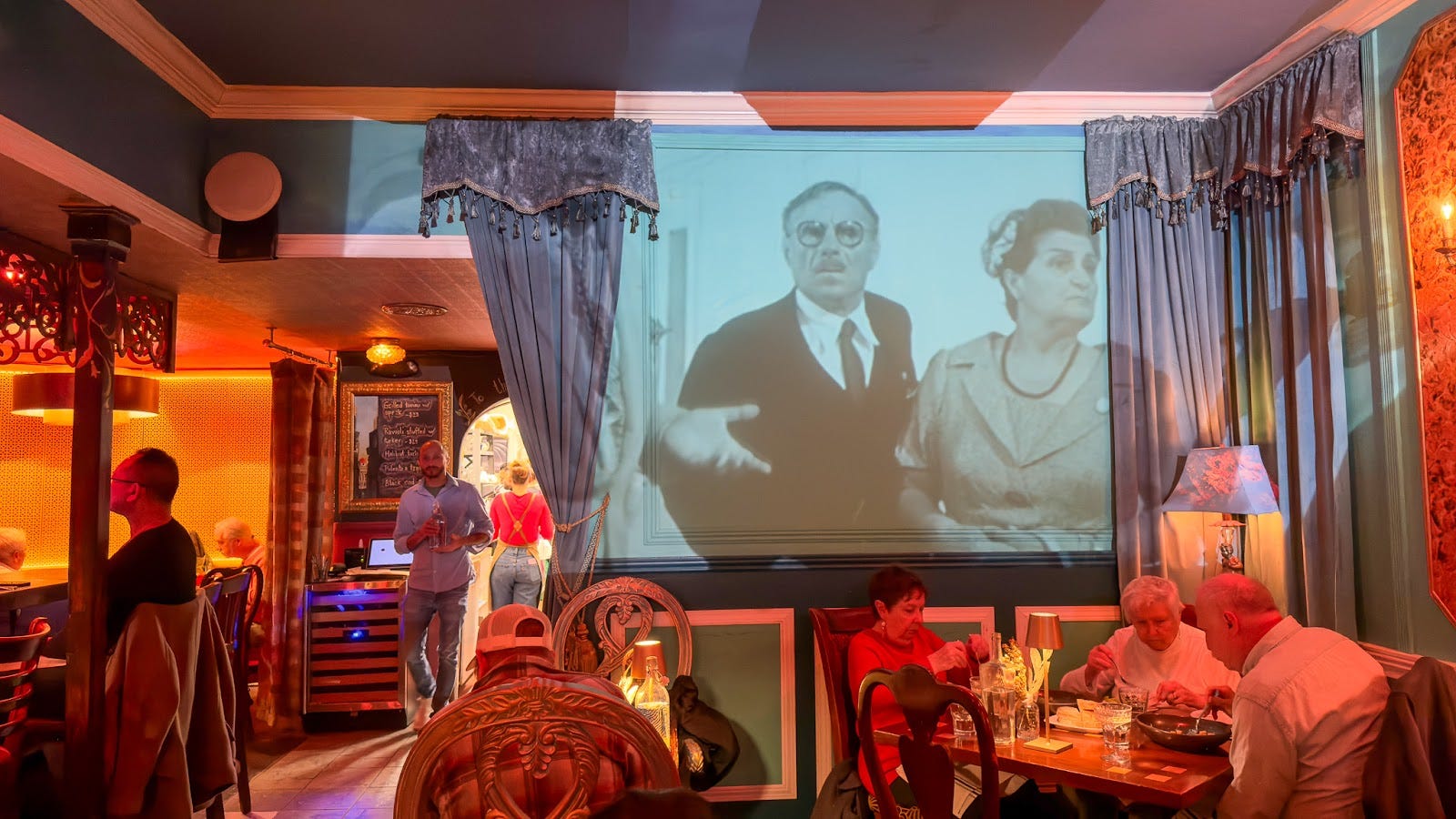
It was now 8 p.m., which is when Art Walk ends. Danae suggested that if we wanted to try to keep the party going we should try Poesia. It’s a restaurant so it should still be open.
Poesia was like stepping into a little piece of Italy right in San Francisco. Nestled inside an old Victorian house, the space was filled with Italian accents, irresistible aromas, and animated gesturing. A black-and-white film flickered on the wall, adding to the charm.
Francesco d’Ippolito, the owner, was as stunningly handsome as he was welcoming — constantly moving in that way only Italians can pull off. The Pappardelle al ragu della nonna and Gnocchi con Gamberoni tasted like they’d been flown in directly from Calabria, and the wine was dangerously drinkable. By this point, we were fully in party mode.
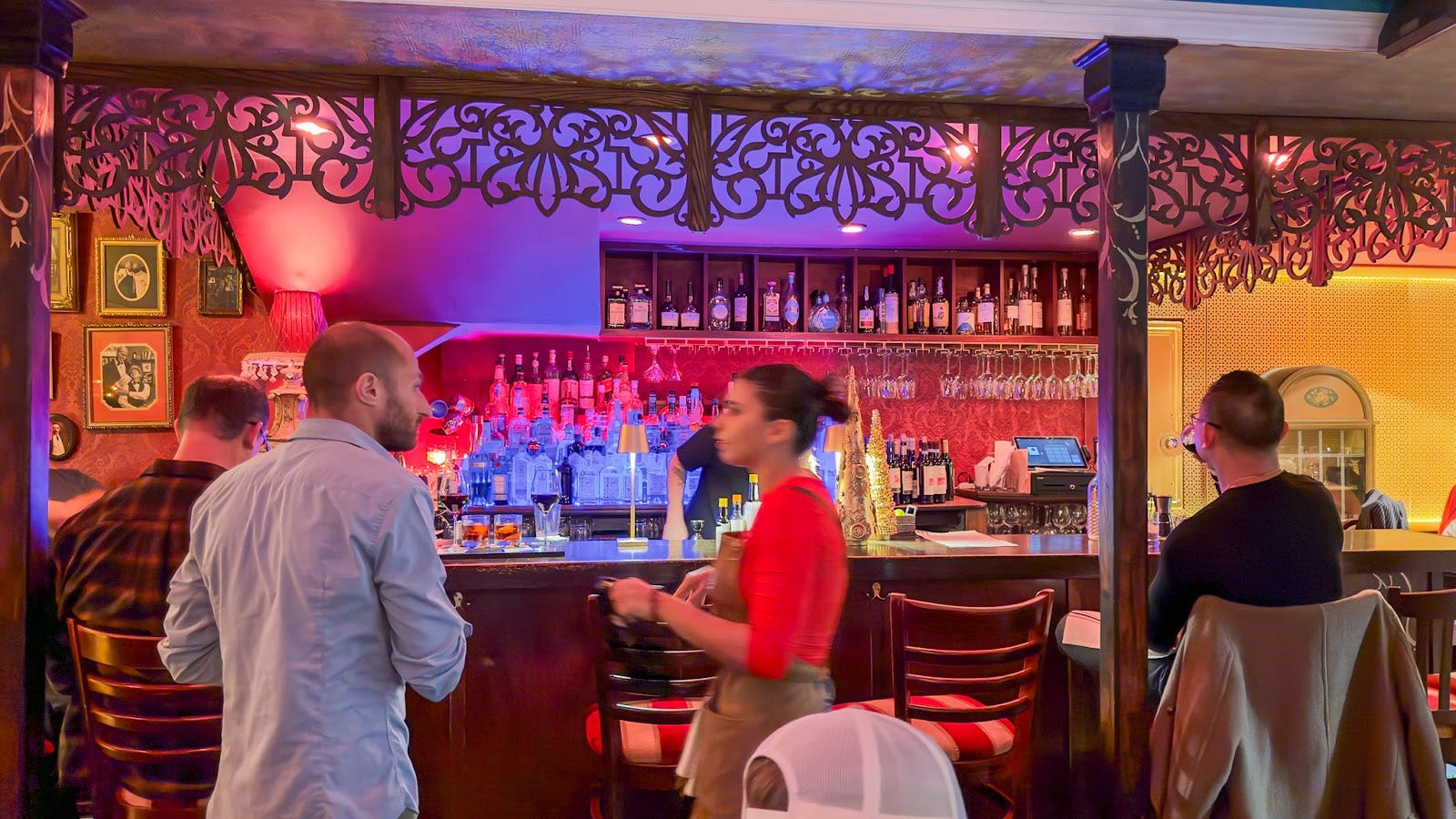
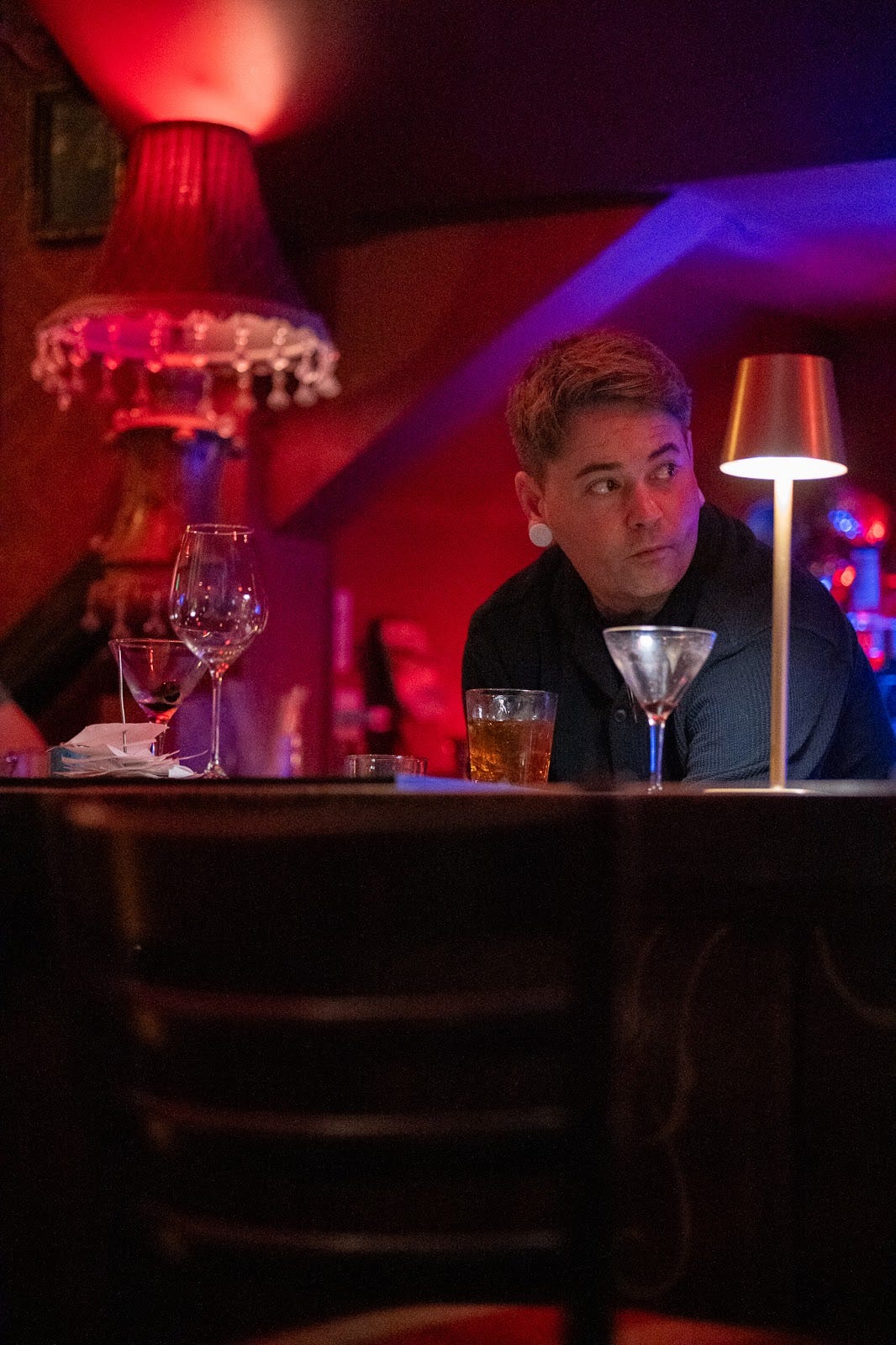
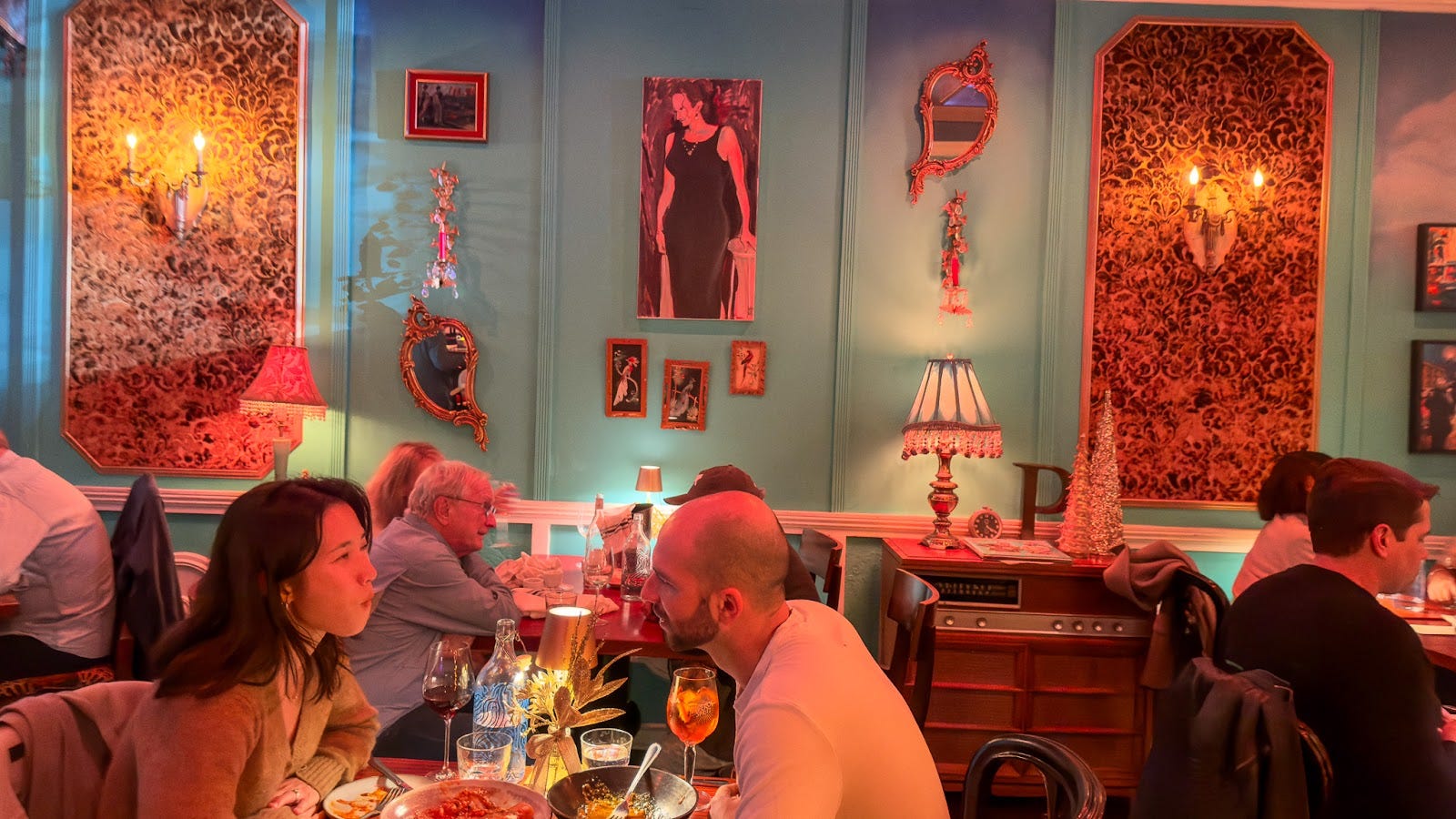
I asked Francesco about the featured artist and he gestured toward a table in the corner where Rob Cox was sitting. Naturally, I invited myself over to his intimate dinner for four. Luckily, they were boisterous and friendly, indulging my tipsy enthusiasm. Honestly, I don’t remember much of our conversation, but Rob was fun, and both his artwork and his dinner crew had a vibe straight out of Midnight in Paris.
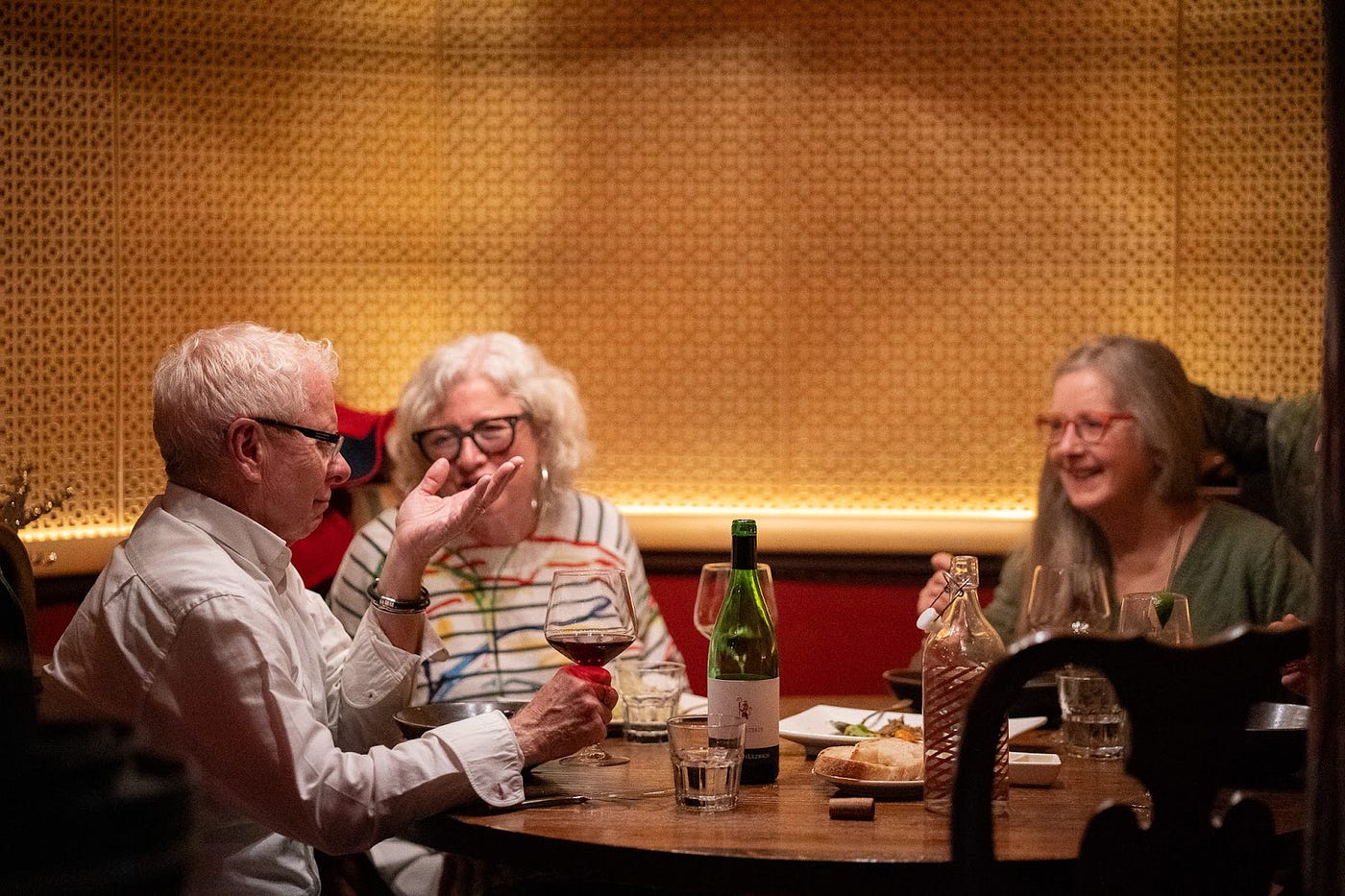
My husband noticed a man with a basket of large mushrooms, sitting with a couple at one of the tables. Curious and uninhibited, we walked over and sat down as if that’s a normal thing to do. They were nice and also pretended like that was a normal thing to do.
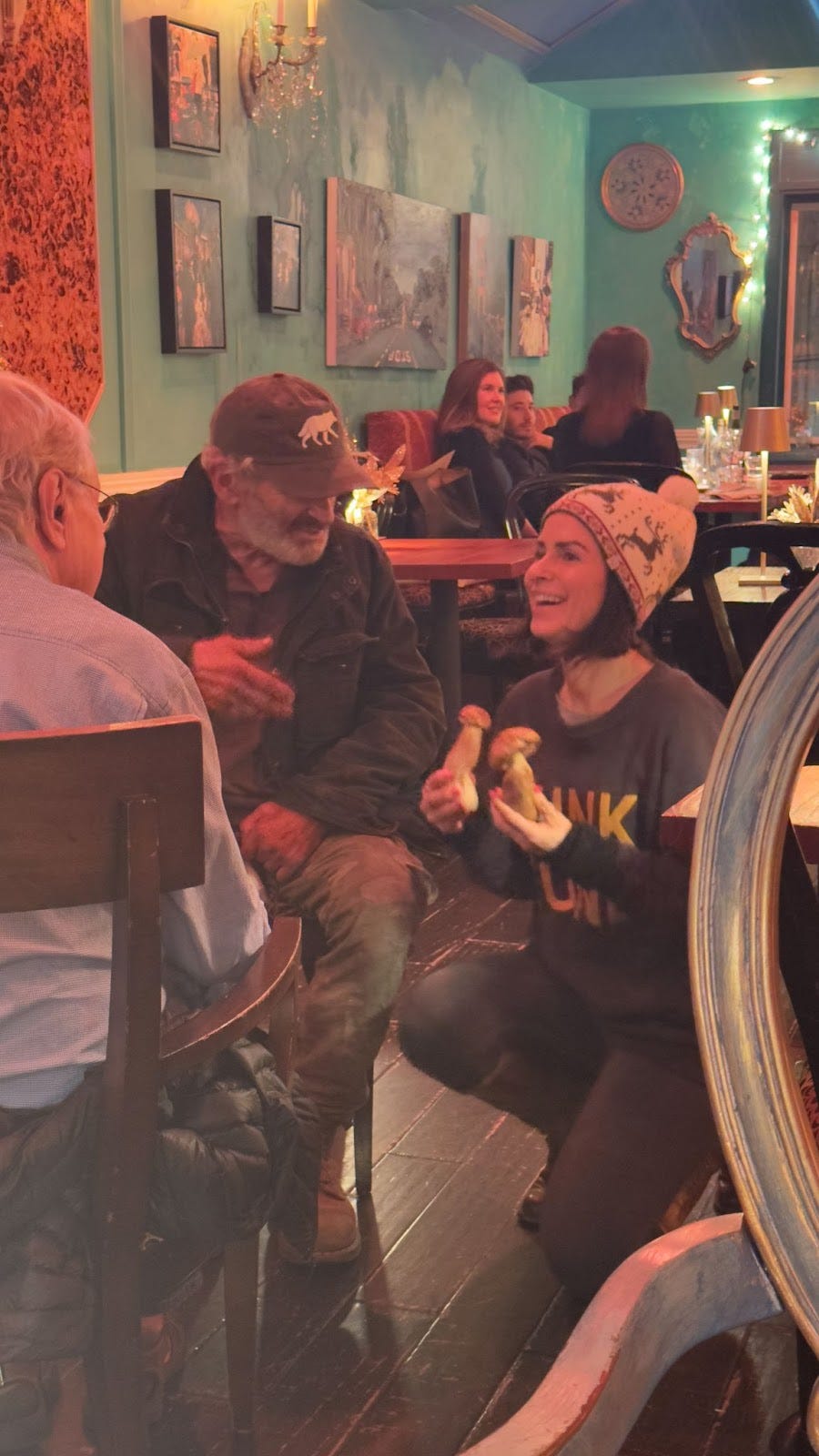
The mushroom purveyor was Chef Giancarlo Bortolotti, apparently a well-known chef who suffered a terrible accident and is now a mushroom forager, well-known in the industry.
After a few more we walked our new friends home — it’s better to travel with four drunk people than with two. Chef Giancarlo gifted us some of his finest porcini mushrooms, with instructions on how to cook them: with butter, garlic, onion, shallot, white wine, and parsley.
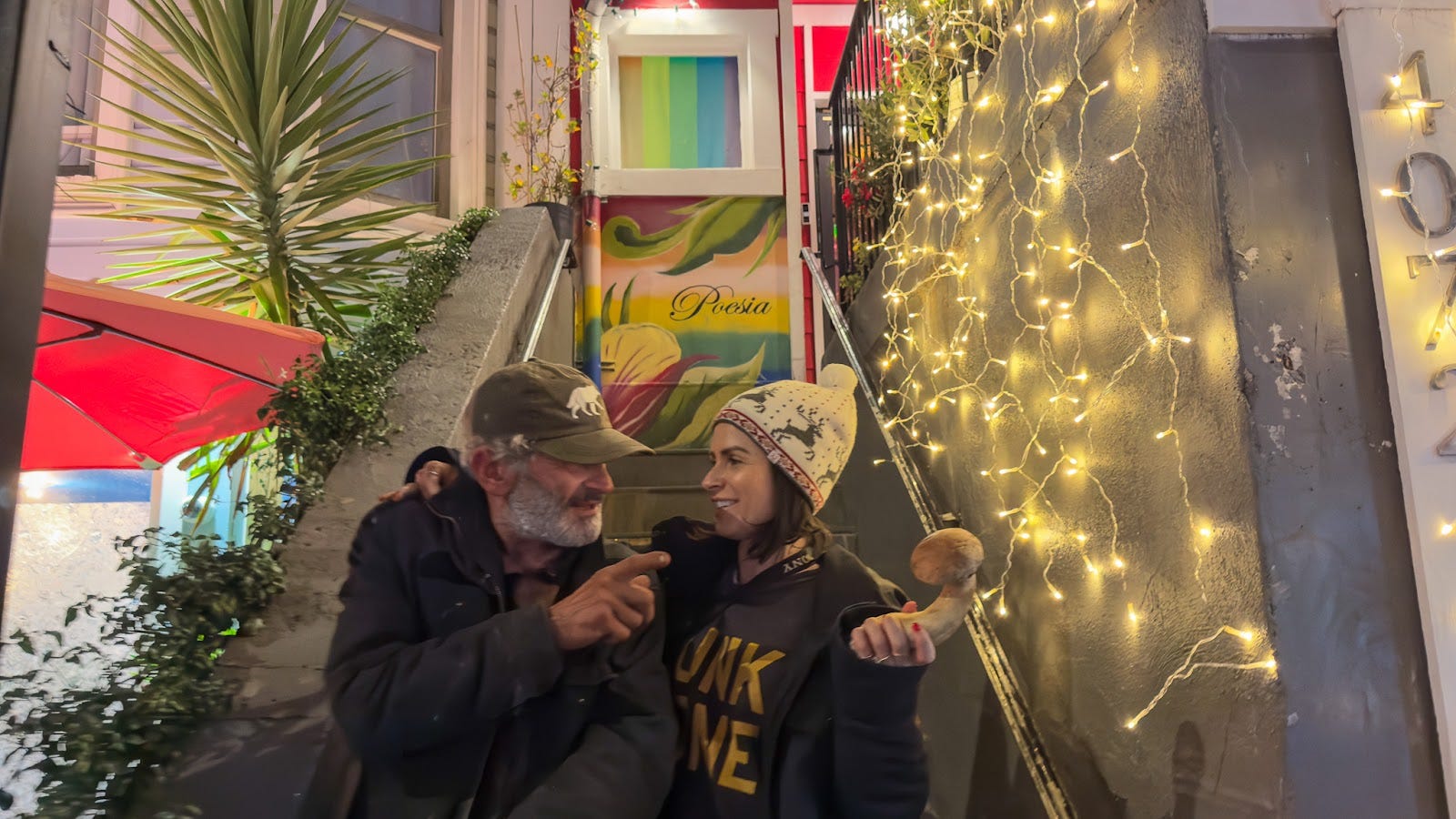

Armed with our porcini mushrooms and the fading glow of wine-fueled camaraderie, we stumbled back toward home, still buzzing from the night. As the clock ticked past one, I stared at the mushrooms and thought, Tomorrow, we’ll turn you into something magical. But for now, we had the best souvenir of the Castro Art Walk — a hazy montage of free wine, good food, and the kind of weird, wonderful characters that only this neighborhood can deliver.
Courtney Muro is a San Francisco-based content strategist, producer, designer, and creator.
The Bold Italic is a non-profit media organization, and we publish first-person perspectives about San Francisco and the Bay Area. Do.nate to us today.



